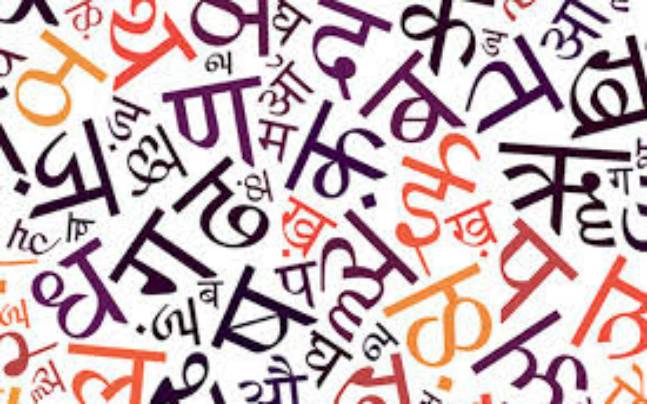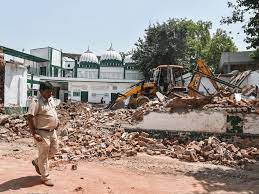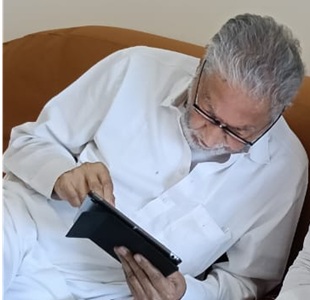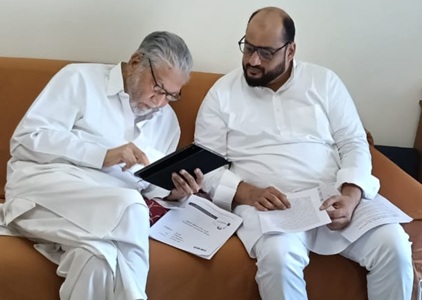Ram Puniyani is a former professor of biomedical engineering and former senior medical officer affiliated with the Indian Institute of Technology Bombay.
Modi.2 has emerged as a very powerful Government. It has not only the numerical majority; it is also facing a weak and divided opposition. That is one of the reasons for it stream rolling over people’s opinions and imposing the agenda of RSS-BJP of Hindu nationalism in a blatant way. On one side it has brought in a law banning triple talaq, on the other it has revoked article 370. Encouraged by these easy successes, now it seems to be unfolding it’s other agendas one by one.
Speaking on occasion of Hindi day, the BJP President and Union Home minister Amit Shah went on to speak his party mind on the subject Hindi as the national language. Mr. Shah said, it was necessary to have one language which could represent India in the world…and that Hindi was widely spoken and could be the language to keep India ‘united’…”To preserve our ancient philosophy, our culture and the memory of our freedom struggle,…there is at least one language, Hindi, that the nation knows. If Hindi is taken out of our freedom struggle, the entire soul of the struggle is lost.” He tweeted this to emphasize his point: “I want to appeal to people to promote their native languages but also use Hindi to make the dream of Bapu and Sardar Patel of one language come true.”
The intentions behind this statement were not so hidden though the language is very clever. The idea is to relegate English and regional languages to the margins and to give more prominence to Hindi all through. Sensing the intentions of Mr. Shah, many a leaders from South India, M K Stalin, Shashi Tharoor, Pinrayi Vijayan and Kamal Haasan have openly come against his statement. All of them see this as an attempt to impose Hindi on these states. Vijayan put it bluntly through his tweet, “That language (Hindi) is not the mother tongue of majority of Indians. The move to inflict Hindi upon them amounts to enslaving them.” While Kamal Haasasn, in a video uploaded with him standing next to the Ashoka pillar and the Preamble, says India became a republic in 1950 with a promise to the people that their language and culture will be protected. “No Shah, Sultan or Samrat can suddenly break that promise. We respect all languages but our mother language will always be Tamil… The battle for our language will be exponentially bigger…”
As such our country has been very diverse in all the matters related to language, culture, religion and ethnicity. The freedom movement was the real reflector of this diversity. People cutting across all these considerations stood as a single fraternity, respecting the diversity and the rich heritage coming from different religions and languages in particular. In all the languages, India’s aspirations of becoming a single nation got expressed. Hindi along with other regional languages have inherited rich lineage of becoming the mirror of Indian society. Though English was introduced primarily as administrative language, it soon became part of Indian culture, and all these also became a mirror of Indian society and aspirations.
In contrast to national movement for freedom from British slavery, which stood to reflect all the languages, the communal forces had different ideas. Muslim communalism came up with the slogan, ‘Urdu, Muslim, Pakistan’, and on parallel lines Hindu nationalism threw up the slogan, ‘Hindi, Hindu, Hindustan’. When Pakistan was formed in the Muslim majority areas (East Pakistan and West Pakistan) their languages were very diverse. Muslim League’s insistence that Urdu should become the national language of Pakistan did precipitate the feeling of separation of East Pakistan from West Pakistan leading to formation Bangla Desh with Bengali as the major language.
Interestingly the Constitution makers concluded that “Hindustani, written either in Devanagari or the Persian script at the option of the citizen, shall, as the national language, be the first official language of the Union. English shall be the second official language for such period as the Union may, by law, determine.” The three language formula envisaged English, Hindi and regional language as the fulcrum of education. During sixties there was an attempt to introduce Hindi in Southern states, and this led to massive protests all over, with the result the policy was put on hold. Again with new Education Policy under consideration wanted to make Hindi as mandatory. The argument continues that Hindi is language of the majority of Indians. The latest data shows that it is mother tongue of 25% of Indians and 44% people say they know Hindi. The massive opposition to this language part of New Education Policy yet again led to holding back of Hindi as mandatory. One recalls that even during 1940s when Congress Government came to power in Tamilnadu (Madras at that time.), attempt was made to introduce Hindi there. The resistance to this was articulated by Periyar Ramasamy Naicker, who raised the slogan ‘Tamil Nadu for Tamilians’ and accused Hindi of being a tool of the Aryans for infiltrating Dravidian culture.
How does one deal with the complex language issue. Country has been running well with English, Hindi and regional languages being used in different proportions at different levels. While there have been conscious efforts to spread Hindi to Southern states, there are no parallel steps to popularize regional languages in Hindi speaking states. One must say Hindi has definitely made long strides in spreading into southern and other states all over the country but this task has been achieved not by impositions from top but by the spread of Hindi films, and popular Hindi serials apart from the efforts of organizations promoting Hindi.
Issue of Urdu as national language contributed to split of Pakistan. In contrast India has done a remarkable balancing act in matters of languages so far. The reorganization of states on linguistic lines has given a unique strength to us. With Amit Shah unfolding their agenda of imposing homogeneity all over, including in matters of language, one hopes this present sanity will prevail and sentiments and aspirations of all non Hindi speaking states will be given due weight age in deciding the national language policy.







0 Comments